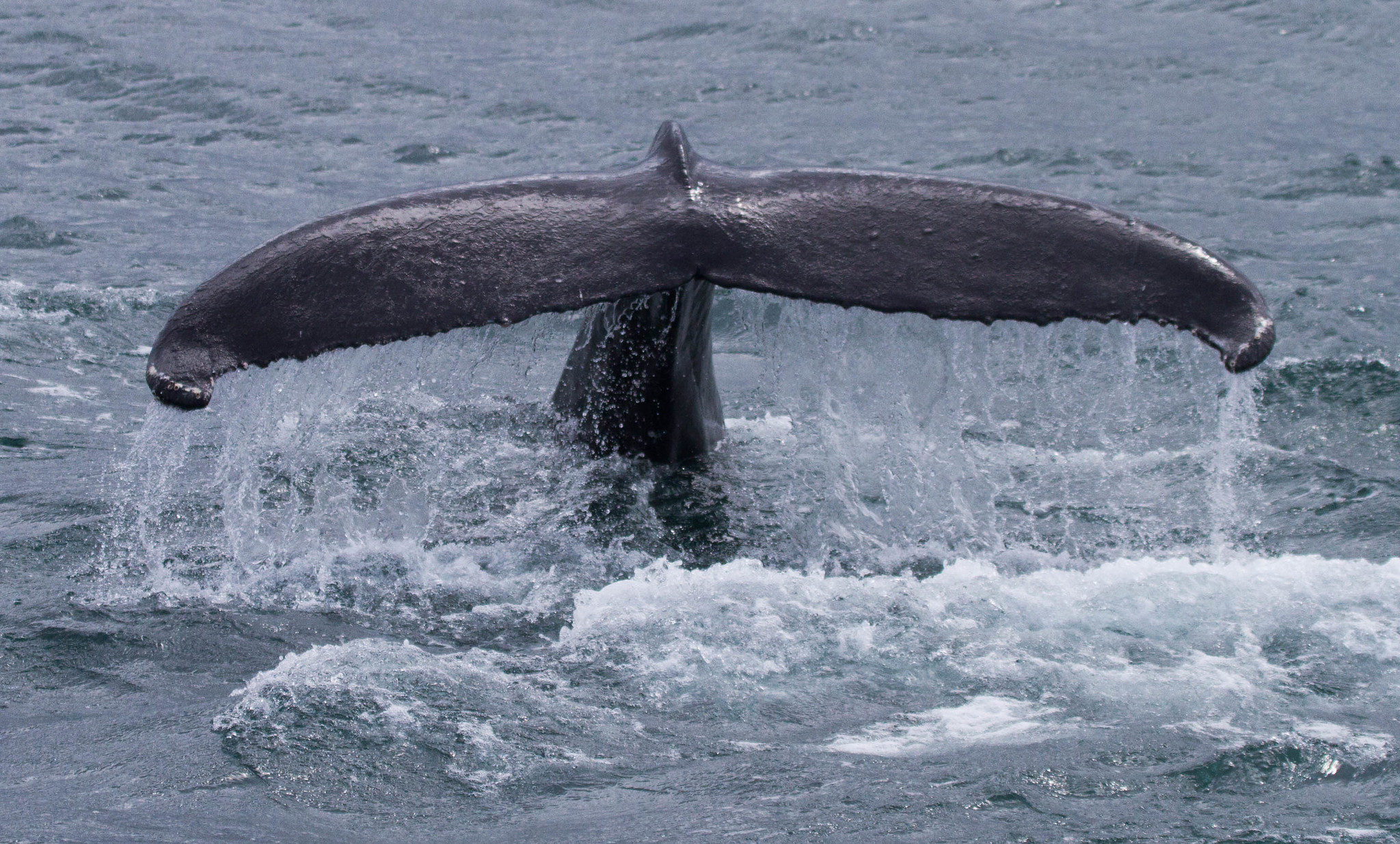
You never know – you may, with a pinch of luck, spot a Humpback Whale off The Lizard’s coastline over the autumn and winter months.
Photo: Captain Budd Christman, NAOO
Scientific name: Megaptera novaeangliae
Other common names: Hump Whale, Hunchbacked Whale
Cornish name: The general word for a whale is morvil.
Conservation status: IUCN Red List, Least Concern; protected in the UK under the Wildlife and Countryside Act 1981.
What to look for:
• Appearance: Dark grey to black body, with paler (white or light grey) underside and pectoral fins. Chest and throat are furrowed. Serrations on leading edge of pectoral fins and trailing edge of the tail flukes. The pectoral fins are very large, at up to 5 m in length.
• Size: Adults are up to 18 m long, and weigh up to 40,000 kg; females are a little larger than males.
• Where: Found in oceans across the world.

No mammals, on land or sea, undertake a longer migration than some populations of the magnificent Humpback Whale. Each year, Humpbacks that feed in the summer in polar waters to the south of Cape Horn make an epic journey to their winter breeding waters close to Colombia and Costa Rica. Indeed, all whales of this iconic species travel thousands of kilometres between feeding and breeding grounds each year.
Found globally in our oceans, Humpbacks are baleen whales. That means they are filter feeders, sieving plankton from the seawater as food. They do this almost continuously over the summer months, stocking up on nourishment in preparation for the migrating and breeding periods during which they do not eat at all. The ridges on their throats expand to enable them to open their mouths widely, so they can filter a large volume of water. They also eat small fish, and Pacific populations sometimes cooperate by using a ‘bubble net’ to confuse their prey, making it easier to catch them.
Humpback Whales get their name from the way they arch their back before taking a deep dive. The males are also renowned for their complex ‘singing’, used in courtship and which has its own ‘linguistic’ variations: each population has its own ‘dialect’, which changes with time. The females are pregnant for 10 to 12 months. After birth, the calves return with their mother to the summer feeding regions at the poles.
You can spot Humpbacks off the coast of The Lizard over the winter, with a fair pinch of good fortune and if you keep your eyes peeled.
Did you know…?
…Individual Humpback Whales can be distinguished from each other by the unique pattern on the underside of their tail flukes.
More information and references:
Groves, D., 2013. The Mammals of Cornwall and the Isles of Scilly. Cornwall Mammal Group. ERCCIS, Truro, Cornwall.
Macdonald, D. and Barrett, P., 1993. Collins Field Guide: Mammals of Britain and Europe. HarperCollins, London.
Published: November 2017
Author: Amanda Scott
Photos: Top icon, Captain Budd Christman, NAOO; main photo, © Natural England/Rebecca Walker
